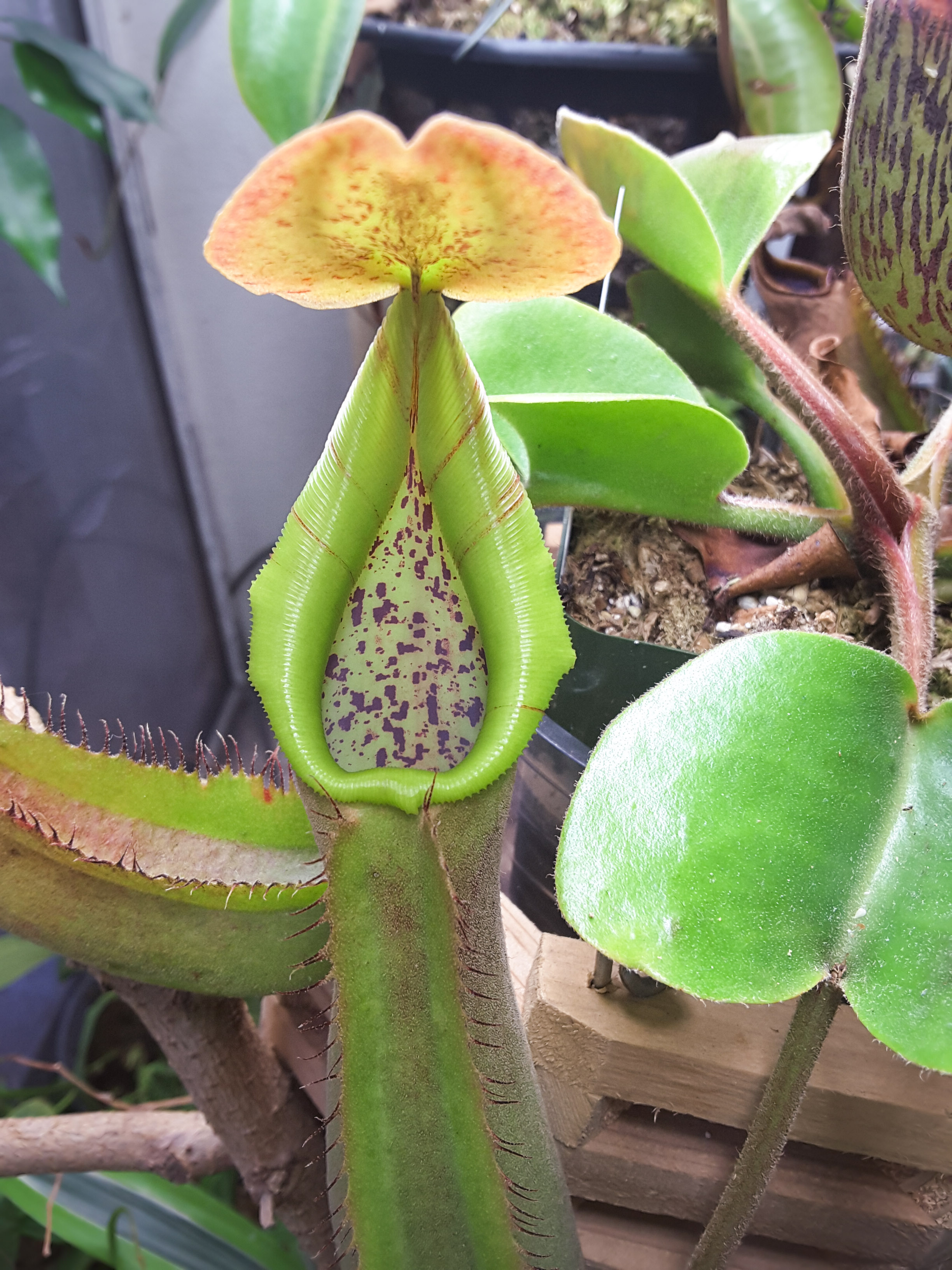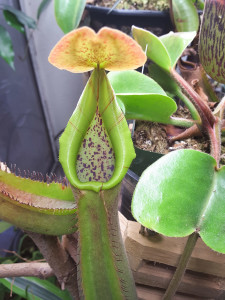
Nepenthes truncata Cultivation and photos
Nepenthes truncata
Highland/Intermediate/Lowland Pitcher plant species: Mindanao, Philippines
Altitude: 0-1500 meters above sea-level (0-4920 feet)
Nepenthes truncata in named for its “truncate” (heart shaped) leaves. The leaves, ease of growth and its giant pitchers make N. truncata a very popular plant in botanical collections N. truncata has been a great beginner windowsill plant, because of its thick leaves it has great adaptability to humidity fluctuations. Nepenthes truncata also grows to a very large size in cultivation and can regularly produce pitchers over 40cm(16″) when full grown!
It is interesting to note, in Stewart McPherson’s book, Pitcher Plants of the Old World Volume One , he has found that N. truncata is one of the most observed plants in cultivation, but very little has been done in the field. As such he found Nepenthes truncata the most commonly reported species for successfully catching mice and rat’s in cultivation, but almost no reports of them doing so in the wild. Nepenthes truncata is found on p. 775 of Pitcher Plants of the Old World Volume Two
Nepenthes truncata is found in lowland, intermediate and almost highland habitats in the wild, but most in cultivation can be treated as an intermediate. My N. truncata slow down in winter with lows of 50F(10C) but don’t show any extreme stress and come back strong once spring came along and night temps stay above 55-60F(13-16C).
Not the fastest grower by any means, but Nepenthes truncata is very tough plant that can handle most imperfect conditions and especially drought. I have heard from other growers that N. truncata actually prefers dryer conditions than a lot of Nepenthes. In my experience I can’t necessarily say that they prefer to be dryer, but it can definitely handle low humidity and bone dry media with no problems!
I have two different truncata specimens at this time, one is tissue cultured clone, with original seeds from “Pasian highlands” and the other N. truncata is seed grown from the greenhouse breeding programs of Exotica Plants in Queensland, Australia. They have bred many different forms of truncata and have used them in many of their most world famous Nepenthes hybrids.
Nepenthes truncata Care and Infomation
- Has very thick leaves and so can thrive in very low humidity, great windowsill candidate.
- Tough and easy to care for and shares some traits with its famous relative Nepenthes robcantleyi .
- Bred extensively by Exotica Plants in Australia, they have many different greenhouse bred lines, which are very large, beautiful and easy to grow.
- One of the largest Nepenthes with pitchers up to 40cm(16″) in length has been known to eat rat’s and lizards in cultivation!
If you want to learn more about cultivation of carnivorous plants, I highly recommend the comprehensive grow guide The Savage Garden, Revised: Cultivating Carnivorous Plants by Peter D,Amato. It is very easy to follow and reference and contains pictures and cultivation techniques for every genus of carnivorous plants.
If you want to learn more about Nepenthes or other pitcher plants, and see pictures of these spectacular species in the wild, I highly recommend reading Pitcher Plants of the Old World Volume One and Pitcher Plants of the Old World Volume Two
by Stewart McPherson it is over 1000 pages about nepenthes and cephalotus.
Addition information for this article found at Nepenthes truncata wiki

Recent Comments